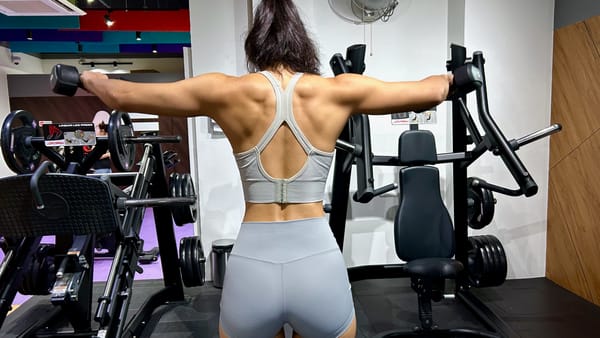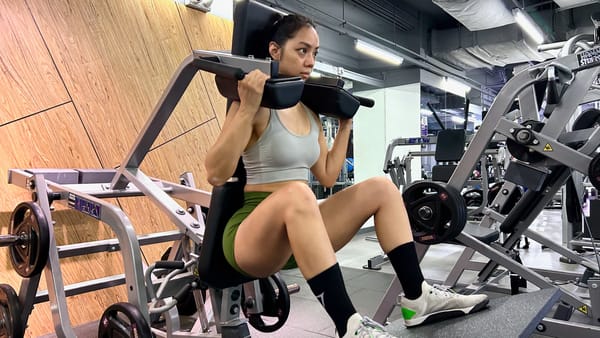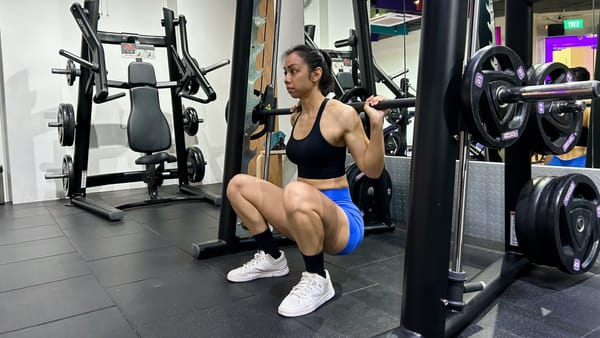6 Bulgarian Split Squat Alternatives (How to Choose)
Practical Bulgarian split squat alternatives worth trying. Unilateral exercises that target your quads and glutes. Perfect for hypertrophy.
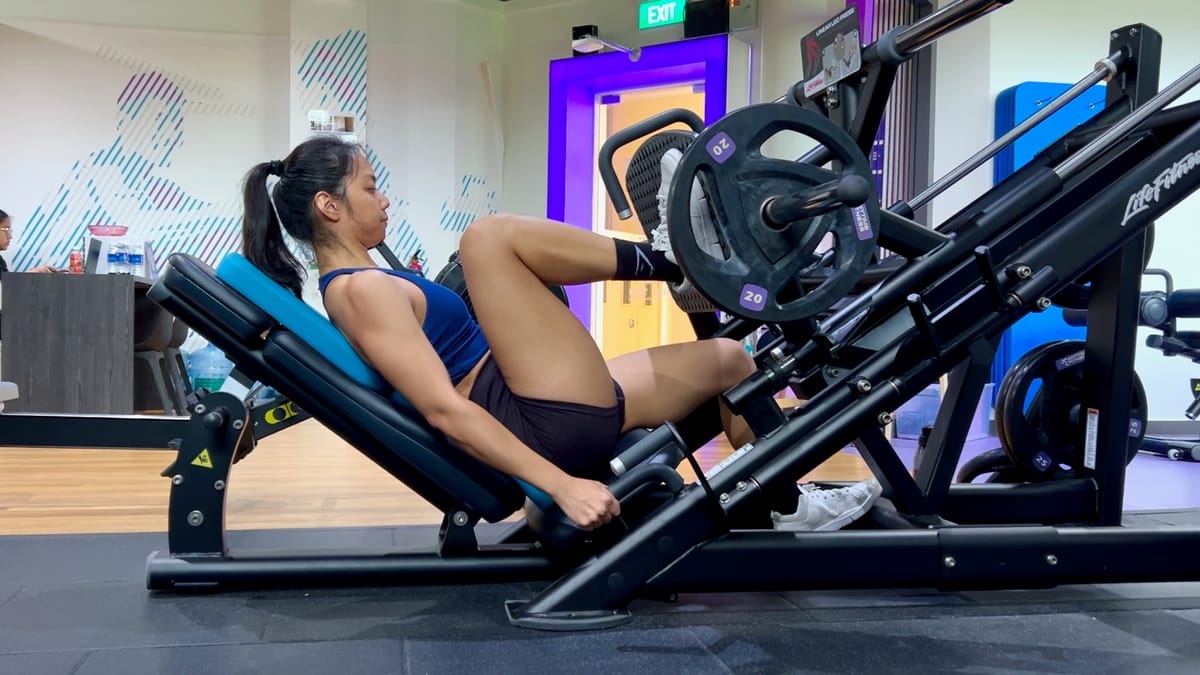
Looking for good Bulgarian split squat alternatives? (🥲 Perhaps because Bulgarian split squats hurt so bad, and you can’t take that sh*t anymore?)
Don’t worry, your secret’s safe with us!
You can explore all your options here without fear.
What makes a good Bulgarian split squat alternative?
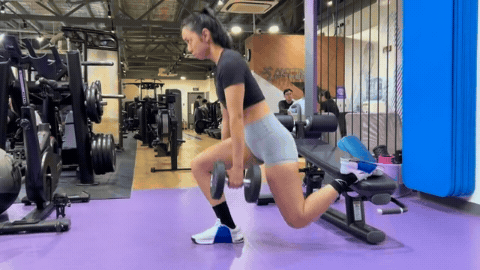
Now, we’re not going to simply throw together some random exercises that leave you thinking, “What garbage is this?” (like *ahem* many articles out there).
You’re far more discerning. 🧐
That’s why we have clear criteria for Bulgarian split squat alternatives:
- Must be a unilateral exercise focused on training 1 leg at a time
- Has a similar movement pattern with both knee and hip flexion
- Bonus: has a stable setup that's easy to progress on for all trainees
Why is a stable setup helpful?
With unilateral leg exercises, a major limitation is often balance.
A likely reason is that your stabilizer muscles aren’t strong enough to handle the weight your quads and glutes are capable of.
This limits how heavy you can go and how hard you can push on your exercises.
If your goal is to build muscle, this could slow your progression.
Exercises with stable setups can be really helpful in overcoming this limitation.
Overview of Bulgarian split squat alternatives
Here’s an overview of all the exercises grouped by the amount of support each one offers.
| Exercise | Exercise type | How much support? | Equipment choices |
|---|---|---|---|
| Single-leg leg press | Machine | Plenty | Leg press |
| Single-leg hack squat | Machine | Plenty | Hack squat |
| Split squat | Free weight or machine | Average | Dumbbell, barbell, Smith machine |
| Step-up | Free weight or machine | Average | Dumbbell, barbell, Smith machine, cable machine |
| Reverse lunge | Free weight or machine | Low | Dumbbell, barbell, Smith machine, landmine |
| Curtsy lunge | Free weight or machine | Low | Dumbbell, barbell, Smith machine, landmine |
#1: Single-leg leg press
How much support is available? Plenty. Your entire back is supported (don’t think you could get more).
Demo of the single-leg leg press:
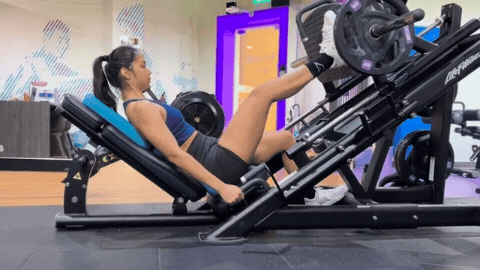
The single-leg leg press is a wonderful Bulgarian split squat alternative.
Trainees who have trained with leg presses would find the single-leg version quite intuitive and straightforward.
The main advantage of the single-leg leg press? It provides a very stable setup.
This lets you focus on the execution of the exercise instead of worrying about balance.
Common mistakes:
- Rounding your lower back
- Not distributing the weight on your foot evenly
- Letting your knee cave inwards
- Not going low enough for your ROM
Helpful tips:
- Brace your core for stability
- Maintain a tripod foot position for good weight distribution
- Keep your feet in line with your toes
- Go as deep as you can safely go
Plus, there probably isn’t a gym that doesn’t have a leg press. (Bold statement, we know.)
The point is: the single-leg leg press is one of the most stable unilateral setups you’ll have access to, so use it if you can.
#2: Single-leg hack squat
How much support is available? Plenty. As much support as you can get.
Single-leg hack squat demo:
Just like the leg press, the single-leg hack squat is an excellent machine-based Bulgarian split squat alternative.
The main difference? The hack squat loads the weight on your shoulders instead of the legs, which could feel a little less stable.
Because of this, you might be tempted to shift more weight onto your supporting foot.
Thankfully, it’s not a hard fix. Just be mindful of your weight distribution and keep the pressure on your non-working foot minimal.
Common mistakes:
- Rounding your lower back
- Not distributing the weight on your foot evenly
- Letting your knee cave inwards
- Not maximizing your ROM
- Putting too much weight on the supporting leg
Helpful tips:
- Brace your core for a more stable setup
- Maintain a tripod foot position for good weight distribution
- Keep your knee in line with your toes
- Squat as deep as you can safely go
- Focus most of the weight on your working leg
Dealing with limited mobility? Try doing the B-stance hack squat instead.
It distributes more of your weight towards the supporting foot and overcomes some of the mobility issues.
Sure, it’s less “single-leg”. But if it helps you continue making good progress, why not?
B-stance exercises can be a great way to train unilaterally:
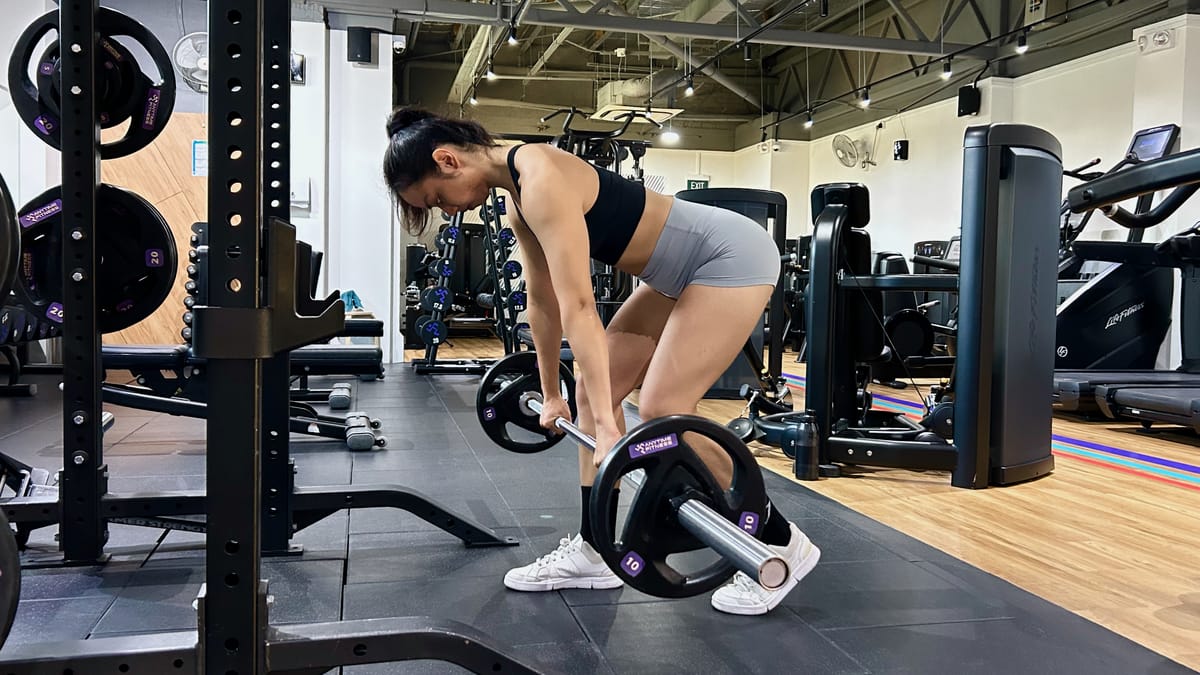
#3: Split squat
How much support is available? Average. But you can use machines for a more stable setup.
Dumbbell split squat (front foot elevated) demo:
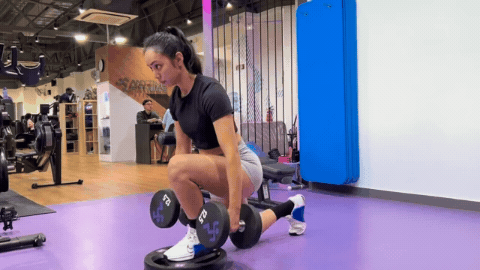
The regular split squat isn’t quite as commonly seen as the Bulgarian split squat. But don’t start thinking it’s a lousier alternative.
With the split squat, your back foot is firmly planted on the floor (instead of being elevated).
This shifts some of the load away from your working foot towards your back foot.
Wait, isn’t that bad? Not quite.
The regular split squat allows you to:
- Use a much heavier load
- Worry less about balance
- Enjoy a simpler setup
- Practice and master the split squat movement
In our opinion, these advantages make the regular split squat a solid alternative to the Bulgarian split squat.
Common mistakes:
- Feet too close or too wide apart
- Shifting weight onto the back foot
- Letting your knee cave inwards
- Using too narrow a stance
Helpful tips:
- Use a width that lets your front knee track over your toes without the back knee hitting the floor
- Elevate your front foot (or both) to increase ROM
- Keep your knee in line with your shoulder for better balance
Can’t get enough ROM on the split squat? Try standing on weight plates or elevating just your front foot. This can improve the ROM significantly.
Of course, as with any unilateral leg exercise, make sure to distribute as much weight as you can on your front foot.
Split squat machine variations
Smith machine split squat:
The Smith machine is surprisingly good for training legs:
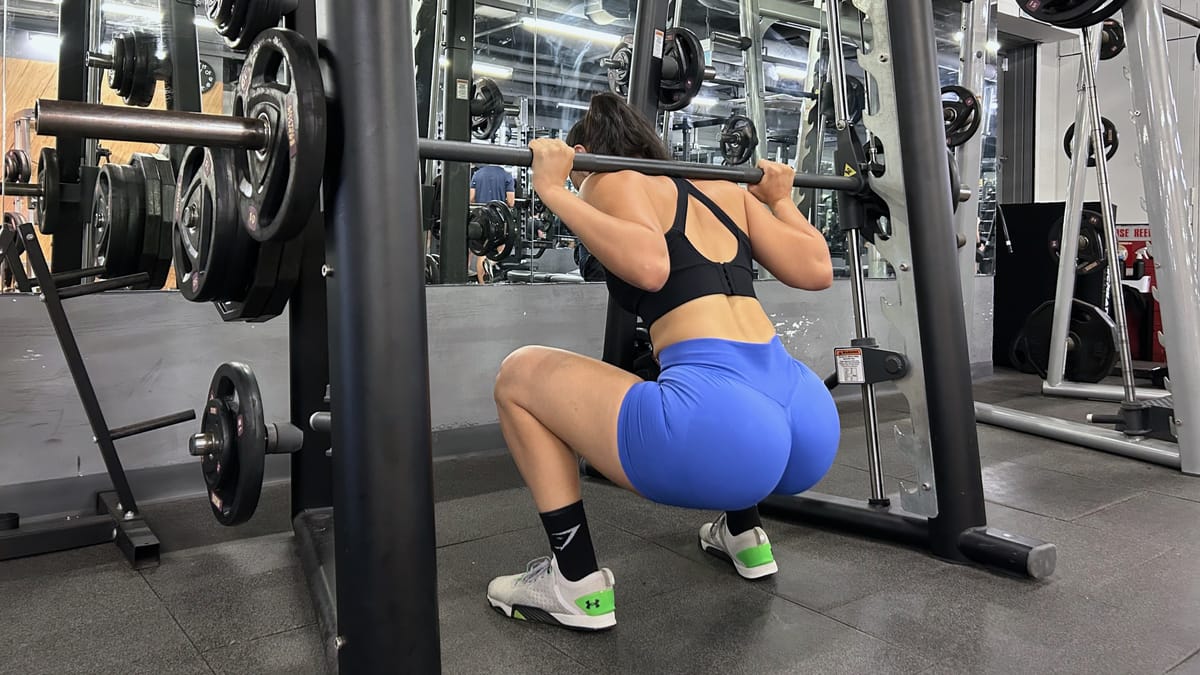
#4: Step-up
How much support is available? Average. But you can opt for machine options to get more stability.
We don’t blame you for thinking the step-up is a horrible alternative to Bulgarian split squats.
It can be so demanding on balance (especially for the uncoordinated) that you’re falling over before you even go near failure.
But here’s the good news: you can make the step-up much more stable simply by grabbing onto a support with a free hand (or using a Smith machine).
Supported step-up demo:
This tiny change allows you to work with heavier weights more confidently and train closer to failure without worrying about falling over.
Common mistakes:
- Using a platform that's too high
- Involving your back leg excessively
- Stepping down too fast
Helpful tips:
- Start with a lower elevation to build strength and mobility
- Step down in a controlled manner to minimize how much the back foot is working
- Grab onto a support with your free hand for a more stable setup
Don’t just use the highest platform or box you can find in the gym. Start with a reasonable height (about knee height) to practice the step-up movement.
Also, pay extra attention to how you control the downward movement. This is a dynamic exercise where you’re constantly moving a foot off the floor.
You don’t want your back leg taking over on the eccentric and letting your front leg miss out on the action.
Step-up machine variations
Smith machine step-up:
Cable step-up:
🤯 There are so man ways to train legs on the cable machine:
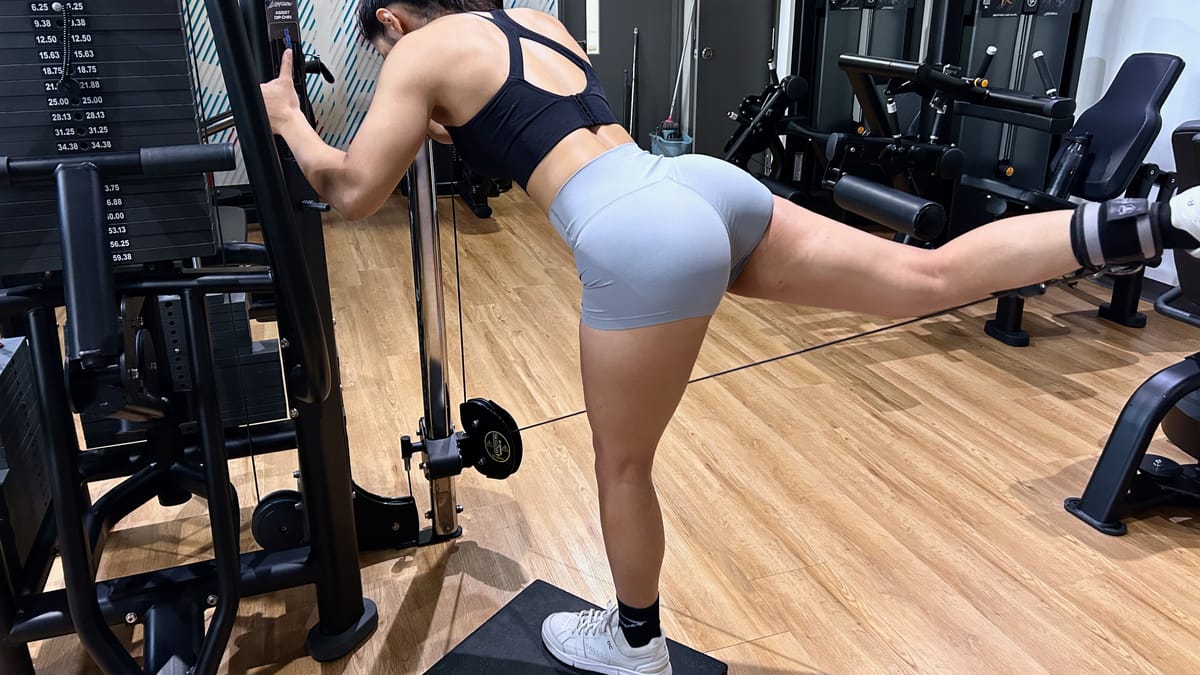
#5: Reverse lunge
How much support is available? Low. Due to constant movement. Could opt for machines for more stability.
Reverse lunge demo:
The reverse lunge is a more dynamic version of the split squat.
This means you’ll be working on your stabilizers more with the reverse lunge.
In our opinion, it’s not quite as good an option as the split squat if your goal is hypertrophy.
But if you’re trying to address a weakness in your stabilizers or improve your balance, this is it!
Common mistakes:
- Putting too much weight on your back foot
- Keeping your stance width too narrow
- Stepping too far back
Helpful tips:
- Control your backward movement to minimize weight shifted to the back foot
- Elevate front foot to increase ROM
- Keep your knee in line with your shoulder for better balance
- Step just far enough to let your front knee track over your toes without the back knee hitting the floor
Like the step-up, pay attention to how much weight you’re putting on your back foot.
Your goal is still the same: place the bulk of your weight on the front leg.
Reverse lunge machine variations
Smith machine reverse lunge:
Landmine reverse lunge:
#6: Curtsy lunge
How much support is available? Low. Due to constant movement. Use machines for a more stable setup.
Curtsy lunge demo:
Want to kick it up a notch from the reverse lunge? Try the curtsy lunge (aka curtsy squat).
The curtsy lunge is a reverse lunge with a twist (literally). Instead of a straightforward backward lunge, you add a sideward movement.
Compared to the reverse lunge, the curtsy lunge works your gluteus medius and gluteus minimus harder since it involves more hip internal rotation.
A great benefit? Curtsy lunges improve hip mobility which carries over to other leg exercises.
Common mistakes:
- Stepping too far sideways
- Letting your torso tilt or sway sideways
- Shifting your weight to the back foot
Helpful tips:
- Don't step so far sideways that your front shin becomes tilted
- Keep your front shin relatively vertical throughout
- Maintain a tripod foot position for good weight distribution
- Brace your core to keep a stable torso position
- Elevate your front foot if you need more ROM
The curtsy lunge is a progression from the reverse lunge. It’s more demanding on both balance and coordination.
If you’re new to lunges, start slow and focus on keeping good form before going up in weight.
Curtsy lunge machine variations
Smith machine curtsy lunge:
Landmine curtsy lunge:
@daniellewebsterfit
Do you really need a Bulgarian split squat alternative?
Let’s take a step back before you decide on the alternative exercise you want to work with.
🤔 Why do you want to replace the Bulgarian split squat? Is it really what you need?
We explore the popular reasons below.
It's really tough
Probably a bigger reason than you think! The Bulgarian split squat is crazy tough.
You need both the physical and mental strength to push hard on it during workouts.
This is normal and inevitable. And yes, even as you become more conditioned and trained, it still hurts.
But you know what, it’s probably worth it!
Setup doesn’t feel right
Can’t get the Bulgarian split squat setup to feel right? This is pretty common.
A popular cause is elevating your back foot a little too much. This limits your ROM and messes with your balance.
Isn’t the bench a “standard” height for Bulgarian split squats? Unfortunately, it isn’t. That’s just what you usually see on social media.
For many people, the bench might actually be too high.
With the Bulgarian split squat, it’s better to keep the back foot lower rather than higher.
2 ways to fix this problem:
- Stick to the bench, but elevate your front foot with weight plates
- Find a lower elevation for your back foot
Fix your Bulgarian split squat:
Want to add more variety to workouts
Variety in your program is good for hypertrophy. (Just don’t take this to the extreme and change exercises every week.)
Let’s say you work with Bulgarian split squats 2 times a week. Switching 1 of them out for an alternative would help bring more variety to your training.
This could potentially give you better results. Plus, it keeps things fun and fresh!
So yes, this is a great reason to switch it up!
How to choose a Bulgarian split squat alternative
While the options we’ve talked about are all great, you would need to narrow your choice down based on your training goals and preferences.
If your goal is hypertrophy, exercises with plenty of support can form the bulk of your training. Supplement that with free-weight options so your stabilizers still get some work in.
Why do you want stable exercises for hypertrophy?:
- You can push closer to failure
- You’re less limited by your stabilizers
- You don’t have to worry about balance
- You can better focus on overloading progressively
If you need to work on your stabilizers, do more free-weight exercises instead.
The point is: it’s a lot more flexible than you think! 😎
Assess your needs at every stage and tweak your training to match your goals.




